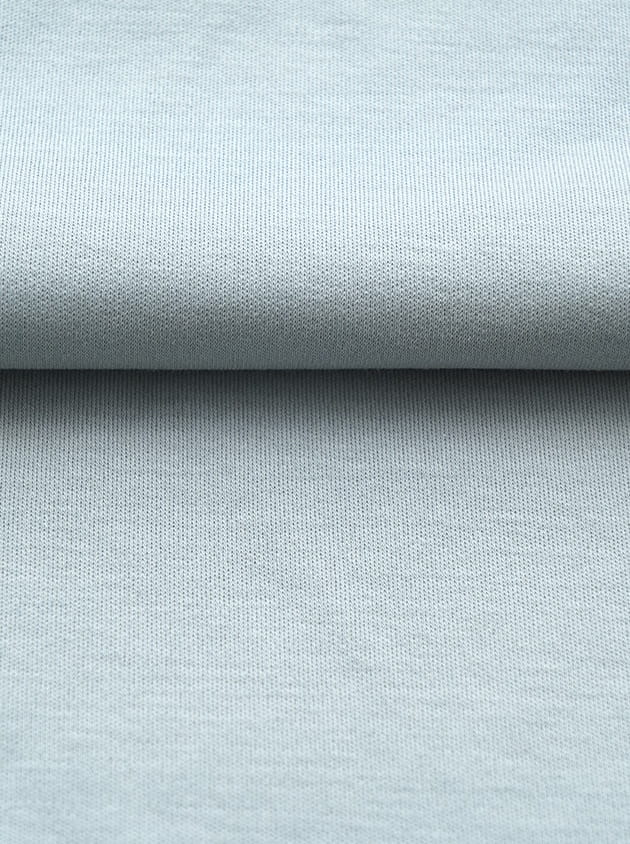What are the characteristics of different knitted rib materials
Update:07 Sep
Rib cotton: Cotton fiber is the fiber covered on cotton seeds, referred to as cotton. Cotton fibers from which the cottonseed has been removed are called lint or raw cotton.
Variety: According to the thickness, length and strength of the fiber, raw cotton can generally be divided into three categories: long-staple cotton, fine-staple cotton and coarse-staple cotton.
Structure: The cotton fiber is a tubular body with one end open, which shrunk into a hollow band after maturity and drying. The main component of cotton fiber wall is cellulose with a high degree of polymerization. The content of cellulose in dry mature cotton fiber is more than 95%, which is a cellulose resource with high purity in nature. Performance: Cotton fiber is generally fine and soft, and the skin feels more comfortable. It has strong hygroscopic ability. Generally, the wet strength of cotton fibers is stronger than the dry strength. The elasticity is poor, and the cellulose can be treated with anti-wrinkle to make it have better shape retention. Cotton fiber has better thermal insulation. At high temperature, the plasticity is better. If the cotton fiber is exposed to sunlight for a long time, the strength will be reduced, and the fiber will become hard and brittle: if it encounters oxidants, bleaching powder or dyes with oxidative properties, the fiber strength will also decrease, and it will become brittle and hard.
2. Ribbed hemp: hemp fiber was originally the textile raw material for clothing.
Varieties: Ramie and Linen
Structure: The chemical composition of ramie fiber is generally 65%~75% cellulose. After degumming, the fibers are white and shiny, and called dry hemp. In Japan, it is also called ramie fabric as silk fabric. The cellulose of flax accounts for 70% to 80%.
Performance: hemp fabric feels stiff; poor heat resistance, washable; good moisture absorption and dehumidification, good air permeability, poor dyeability.
3. Rib hair
Variety: cotton wool, the narrow sense of wool in textiles often refers to cotton wool. Cashmere, also known as cashmere, is a valuable knitted rib.
Structure: Wool fiber is a protein fiber, mainly composed of scale layer, cortex layer and medulla layer.
Performance: The strength of wool fiber is poor, but the elasticity is good. The wool fabric is crisp, not easy to wrinkle, and has good plasticity. Wool fiber has better thermal insulation than other fibers, and has good moisture absorption and breathability. The acid resistance is good, the alkali resistance is poor, and the sunshine time should not be too long. But it is easy to be moth-eaten and mildew.

Variety: According to the thickness, length and strength of the fiber, raw cotton can generally be divided into three categories: long-staple cotton, fine-staple cotton and coarse-staple cotton.
Structure: The cotton fiber is a tubular body with one end open, which shrunk into a hollow band after maturity and drying. The main component of cotton fiber wall is cellulose with a high degree of polymerization. The content of cellulose in dry mature cotton fiber is more than 95%, which is a cellulose resource with high purity in nature. Performance: Cotton fiber is generally fine and soft, and the skin feels more comfortable. It has strong hygroscopic ability. Generally, the wet strength of cotton fibers is stronger than the dry strength. The elasticity is poor, and the cellulose can be treated with anti-wrinkle to make it have better shape retention. Cotton fiber has better thermal insulation. At high temperature, the plasticity is better. If the cotton fiber is exposed to sunlight for a long time, the strength will be reduced, and the fiber will become hard and brittle: if it encounters oxidants, bleaching powder or dyes with oxidative properties, the fiber strength will also decrease, and it will become brittle and hard.
2. Ribbed hemp: hemp fiber was originally the textile raw material for clothing.
Varieties: Ramie and Linen
Structure: The chemical composition of ramie fiber is generally 65%~75% cellulose. After degumming, the fibers are white and shiny, and called dry hemp. In Japan, it is also called ramie fabric as silk fabric. The cellulose of flax accounts for 70% to 80%.
Performance: hemp fabric feels stiff; poor heat resistance, washable; good moisture absorption and dehumidification, good air permeability, poor dyeability.
3. Rib hair
Variety: cotton wool, the narrow sense of wool in textiles often refers to cotton wool. Cashmere, also known as cashmere, is a valuable knitted rib.
Structure: Wool fiber is a protein fiber, mainly composed of scale layer, cortex layer and medulla layer.
Performance: The strength of wool fiber is poor, but the elasticity is good. The wool fabric is crisp, not easy to wrinkle, and has good plasticity. Wool fiber has better thermal insulation than other fibers, and has good moisture absorption and breathability. The acid resistance is good, the alkali resistance is poor, and the sunshine time should not be too long. But it is easy to be moth-eaten and mildew.

Recommended Products
-

WBDM20001 Single-sided herringbone cloth Knit Fabric
-

WBCT002 32SJC AND 20D Jerse Fabric
-

WBDM20007 62.1% Viscose Red Roma Cloth Fabric
-

2*2RIB Knit heathered Fabric 96%Cotton
-

Ribbing-WBLW20003WBLW20003 Light gray 56.4%Cotton 2*2 RIB Knit Fabric
-

WBMQ20006 165CM WITH French Termy
-

solid Color Double Knit Fabric
-

WB17011-1 95% Cotton Looped 2x2 Rib Knit Fabric
-

WB18007-1 Double knitted fabric Stripe 95%Poly
-

WB19016 73%Poly Gray Double Knit Fabric

 English
English 中文简体
中文简体
